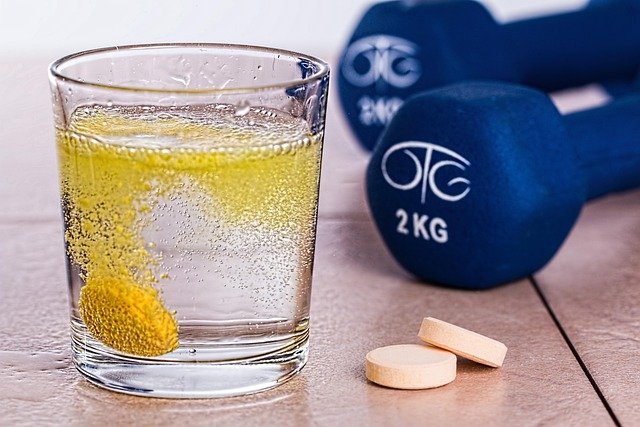Timing Meals and Workouts to Optimize Skin Regeneration
Timing what you eat and how you exercise can influence the skin’s natural repair cycles. Coordinating meals, hydration, and different workout types with sleep and recovery windows supports collagen production, reduces inflammation, and helps maintain barrier function—practical timing strategies can improve visible skin health over time.

Understanding how daily habits affect skin regeneration helps translate wellness routines into visible results. Skin repair is influenced by nutrient availability, circadian rhythms, and the balance between training stress and recovery. Aligning meals and training so the body has fuel when repair processes are active — and rest when inflammation should resolve — supports collagen synthesis, antioxidant activity, and hydration status. This overview focuses on practical timing strategies rather than one-size-fits-all prescriptions, and integrates nutrition, movement, and sleep considerations to support skin health through improved recovery and cellular renewal.
How does nutrition support skin regeneration?
Eating with skin repair in mind means supplying adequate protein, essential fats, and antioxidants at times when cells are rebuilding. Amino acids from dietary protein provide the building blocks for collagen; meals containing lean protein and vitamin C help support synthesis. Antioxidant-rich foods—berries, leafy greens, and nuts—reduce oxidative stress that can impair healing. Spreading balanced meals across the day ensures a steady supply of nutrients for continuous epidermal turnover. Timing a protein-containing meal within a couple of hours after intense training can also support muscle and tissue repair processes that indirectly benefit skin structure.
How much does hydration affect recovery and skin?
Hydration influences skin turgor, barrier function, and the efficiency of nutrient transport. Regular fluid intake across the day supports lymphatic flow and the removal of metabolic byproducts from cells undergoing repair. Drinking water before, during, and after exercise helps maintain thermoregulation and reduces trans-epidermal water loss during activity. Electrolyte-aware beverages after long or intense sessions can aid systemic recovery. Pairing water with hydrating foods—cucumbers, melons, and soups—adds moisture and micronutrients that support overall skin wellness.
What role does sleep play in collagen and repair?
Sleep is a primary window for tissue repair and anabolic signaling. Growth hormone pulses and circadian-regulated repair pathways are most active during deep sleep, promoting collagen production and cell turnover. Poor or insufficient sleep increases inflammatory markers and can blunt antioxidant defenses, slowing visible healing. Prioritizing consistent sleep timing and quality, alongside evening meals that are balanced but not overly large, supports nocturnal repair. Short naps may aid daytime recovery, but consolidated nighttime sleep is most effective for sustained collagen synthesis.
How can strength and mobility training influence skin health?
Strength training stimulates systemic anabolic responses that can indirectly support skin integrity by preserving muscle mass and improving posture and tissue support. Mobility and flexibility work enhance circulation and reduce mechanical stress on skin and connective tissue, supporting recovery and reducing localized inflammation. Combining resistance sessions with active recovery or mobility-focused sessions helps manage cumulative stress. Maintaining good posture through strength and mobility training can also reduce chronic friction and tension that contribute to skin irritation in specific areas.
When should cardio and rest be scheduled for optimal recovery?
Cardio has cardiovascular and metabolic benefits but can increase oxidative stress acutely. Scheduling moderate cardio on days separate from heavy strength sessions, or placing it after a resistance workout with a protein-rich meal afterward, helps balance fitness goals and recovery. High-intensity cardio close to bedtime may disrupt sleep for some people; consider timing harder sessions earlier in the day when possible. Regular rest days and low-intensity recovery activities—walking, gentle yoga, or stretching—support lymphatic clearance and reduce inflammation, aiding the skin’s regenerative processes.
How to time meals and workouts for daily skincare routines?
A practical daily template: prioritize a protein-focused meal within two hours after resistance training, include a mix of antioxidants at lunch and dinner, and ensure steady hydration throughout the day. If evening is your primary training time, allow 60–90 minutes between a light pre-workout snack and exercise to avoid digestive disruption, then consume a modest post-workout meal to support overnight repair. Mindful practices—breathwork or short cooldowns—help lower cortisol levels and support recovery. Integrate topical skincare around these windows: gentle cleansing post-exercise to remove sweat and pollutants, and application of targeted products when skin is clean and hydrated.
This article is for informational purposes only and should not be considered medical advice. Please consult a qualified healthcare professional for personalized guidance and treatment.
Timing is one lever among many for improving skin regeneration. Combining nutrient timing with consistent sleep, adequate hydration, structured strength and mobility work, and balanced cardio supports the body’s ability to repair and maintain skin over time. Small, sustainable adjustments—scheduling protein-rich meals around workouts, spacing intense sessions to allow recovery, and preserving sleep quality—tend to have the most reliable impact on skin resilience and long-term wellness.





